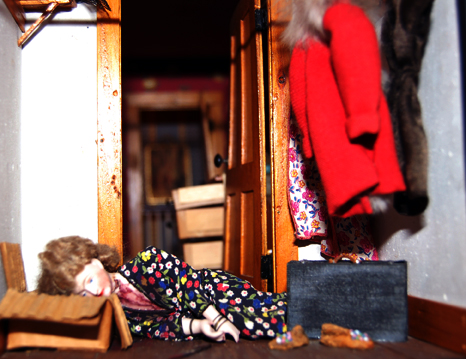When I found out that I had been accepted into the PhD program, my husband bought me a new laptop. It was sweet and very thoughtful and he said that he had no doubt that me and my new laptop would become the best of friends. And so far, we’ve been joined at the hip. Not specifically because we are co-dependent, but because I seem to be going for some sort of world record of how long I spend on these assignments.
I’m not at the point yet where I can tell you exactly what each declaration does — I’m still in trial and error mode. I think eventually it’ll click and I’ll inherently know that to move this, I have to change that. And while Kellie has gotten to know DreamWeaver’s “undo” function, I’m flirting with the gold for the most uploads of my CSS. I find I’m in the habit of changing one thing and then uploading to see how it worked. That’s the beauty of the web. Instant gratification.
I have the basic coded outline of my text assignment. I pulled a basic one column html template from DW and coded in the nav along the bottom of the header. I changed the colors to match my new header. I’m still rocking the Latin placeholder text, but today, I plan to write out the text explaining Frances Glessner Lee’s impact on crime scene investigation.
I did a basic newspaper search from the 40s/50s/60s and found several interesting articles about her. Apparently, Harvard used her program as the means by which to reform the Massachusetts state coroner system in favor of instituting trained medical examiners. (For historians who study crime, coroner’s reports can be a fabulous source of primary materials–coroners were allowed to accept gossip and hearsay as evidence, so they are usually ripe with details about the person’s life. Alas, coroners were not at all trained in police work or medico-legal procedure and eventually went the way of the dodo.) I hadn’t thought about how these dioramas might affect the eventual migration away from the coroner, so this is a nice little twist for my project.
I’ve also been spending quality time with PhotoShop. Last Thursday, I drove up to Baltimore to spend the afternoon with the Nutshell Studies, which are housed on the 4th floor of the Baltimore Medical Examiner’s Office. Visitation is by special approval only, so I am very grateful to Jerry D for accepting my request and letting me roam the little exhibit room for 3 hours with a ridiculous amount of unnecessary camera equipment and Alexa, who was a most gracious helper.

I’m still making my way through all the photos I took, but I did manage to get some that I really like. (Including my new header! Meet Marie Jones, a prostitute who met her untimely end at the point of a knife in the closet of her red bedroom. The packed suitcase and open bureau drawers makes me think she was packing in a hurry…)
Once I organize them all, I have to think about how I might use them. Eleven of the eighteen dioramas have female victims. I took pictures of seven of them hoping that I’d get enough imagery to represent four. (As you can imagine, the lighting was really tough.) I don’t have the official analyses/answers to these dioramas since they are still being used for training, but I do have my own opinions about the pertinent evidence from each.
Not sure if I’ll incorporate my own thoughts, but it’s fun to ponder. Anyone have any ideas on how I might use that info? I’m trying to pull together how these were used to change the face of crime scene investigation. With technological advances in forensic science, these seem a pretty low-tech way to go. Thoughts?